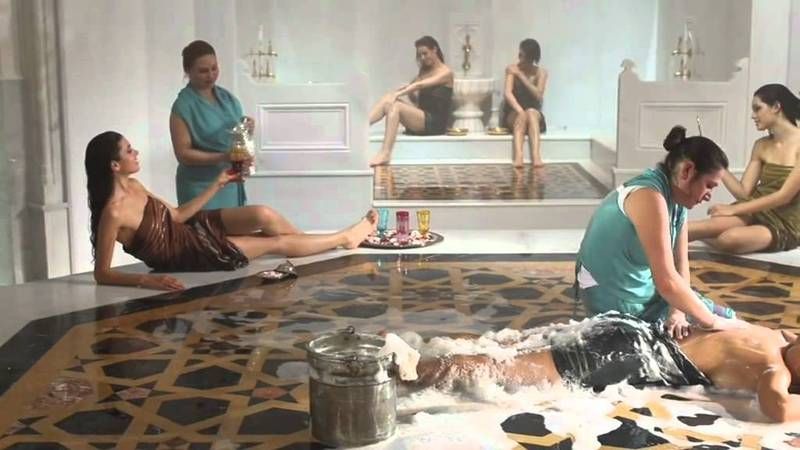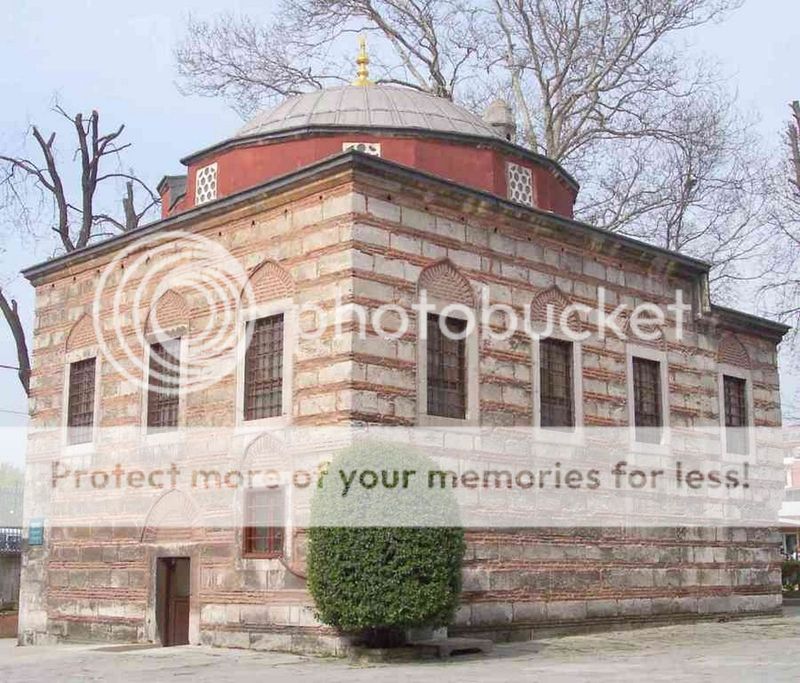GPS : 41°00'31.6"N 28°58'51.5"E / 41.008778, 28.980972
PHOTOGRAPHS ALBUM
The imaret is a charitable institution built to meet the daily food needs of medrasah students, travelers and guests. The Hagia Sophia Imaret was built in Hegira 1152 (1742-1743) by Sultan Mahmut I on the northeastern side of Hagia Sophia. On the eastern side of the Imaret is the Bab-ı Hümâyun (Imperial Gate) of Topkapı Palace and on the southeastern side is the Sultan Ahmet II Fountain. The building stretches adjacently to the northern façade of the Hagia Sophie mosque.
The Imaret consists of three sections - the dining hall (me’kel), the kitchen (aşhane) and the bakery (fodlahane). Its walls were built using alternating stone and brick. The long, narrow area extending westwards is the dining hall; the other two areas that follow are the kitchen and the bakery. The entrance is through doors that open out into the courtyard.
The completely detached three-story building has two gates - one at the front and another at the back. The most spectacular of these gates is the large monumental gate that faces the Ahmet III Fountain. The gate is one of the most beautiful examples of Baroque style in Istanbul.
Decorations under the eaves were replaced during a renovation. The sulus-style inscriptions on the gates of the imaret were made by Beşir Ağa a.k.a ‘Morali,’ who is referred to by his titles, Chief Harem Eunuch or Treasurer, and the poems were written by one of the poets of the era Nimetullah Effendi.
Standing between the imaret’s courtyard and Hagia Sophie is the Byzantine-constructed Skeuophylakion - the Treasury building. The İmaret building was restored in 1777, 1871, 1884 and 1893. After 1920, it served as the archive of the General Directorate of Foundations. A comprehensive restoration was carried out in 2006 and 2007, while museum merchandising work was conducted in 2010.
CARPET MUSEUM
Driven by its mission to make works of art that are Turkish cultural assets available to future generations, the Turkish Directorate General of Foundations opened the Carpet Museum on April 13, 1979 in the Sultan’s Pavilion of the Sultanahmet Mosque.
As part of the project of the General Directorate of Foundations to reorganize museums, it was decided to transform the Hagia Sophia Imaret into the Carpet Museum. Undergoing thorough renovation in 2006-2007, the museum was fitted with a state-of-the-art Museum Display System in 2010, and was reopened in 2013 as the Directorate of Foundations Carpet Museum.
Designed to preserve the works at the museum and make them accessible to future generations, the museum was equipped with a number of features. Wall-type modular display cabinets with laminated safety glass, UV and humidity control, and electronic doors that can be opened only with passwords, museum-compatible lighting, and humidity-control systems, air-conditioning and heating systems, and touch-screen interactive kiosks were installed.
Hagia Sophia Imaret was renovated in 1777, 1871, 1884 and in 1893 and after 1920, was first used as the archives of the Istanbul Directorate General of Foundations and then as a lead workshop.
The General Directorate of Foundations Carpet Museum, one, one of the richest carpet collections in the world, includes carpets having great historical and artistic value that were donated to mosques and mescids as part of old Islamic tradition. Carpets and rugs were donated to allow the donors or the deceased to acquire merit in the afterlife; therefore, such carpets and rugs, along with their refinement and aesthetic and artistic qualities are of special importance.
Carpets and prayer rugs woven with unique regional patterns between the 14th and 20th centuries in many weaving centers of Anatolia, as well as those from Iran and Caucasia, are in the carpet museum collection. The carpets selected from the rarest pieces in the museum collection are exhibited in the three galleries of the museum in chronological order and according to design group.
FIRST GALLERY: Carpets from the Beylikler/Principalities, and Early and Classical Ottoman eras.
SECOND GALLERY: Ottoman-era Central and Eastern Anatolian carpets and prayer rugs.
THIRD GALLERY: Ottoman-era large-sized Uşak (Ushak) carpets and pure prayer rugs.
LOCATION SATELLITE MAP
WEB SITE : Carpet Museum
MORE INFO & CONTACT
E-Mail : info@halimuzesi.com
Phone : +90 216 512 6993
These scripts and photographs are registered under © Copyright 2017, respected writers and photographers from the internet. All Rights Reserved.

